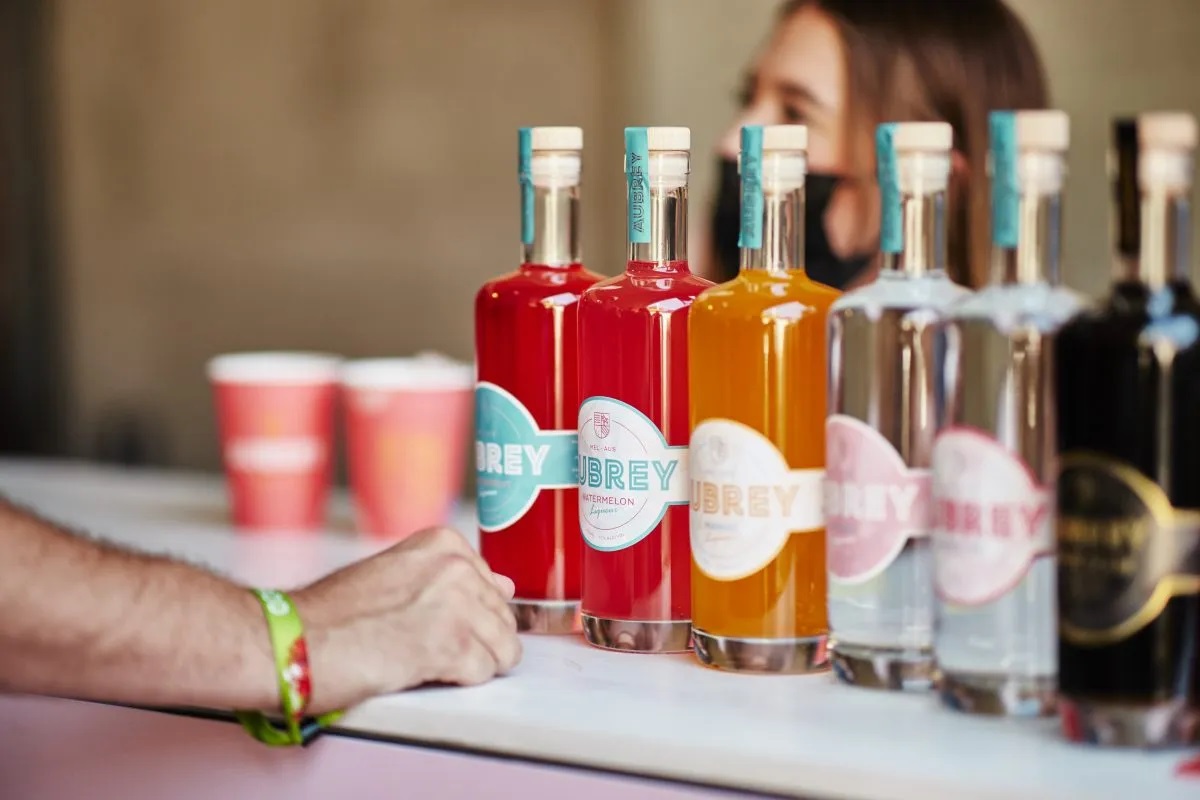The bartending world has always been important to independent liqueur brand, Aubrey Liqueurs.
According to Thirsty Group director Jake Gautreaux, it was demand from bartenders that brought Aubrey Liqueurs to market. During COVID lockdowns in 2020, Thirsty Group was releasing cocktail hampers using Baxter vodka, and were initially decanting other brands of liqueurs to send out in the hampers. However, shipping delays lead to sector-wide supply shortages, and Thirsty Group began making its own liqueurs.
“We decided to start making small batches of them ourselves, which at the time were just unlabelled, just called passionfruit liqueur. We had no intention of actually creating a brand, but when restaurants and bars started opening up again, we had a lot of the bars we were supplying with our vodka contacting us saying, ‘That liqueur that you had in your cocktail hamper, that was really good. Is there any chance you can make some more of it for us?’” Jake explained.
After three months of supplying Melbourne bars directly, it became clear that Aubrey Liqueurs has enough supply to become its own brand. Passionfruit was the first flavour in demand, followed closely by watermelon. The mango liqueur, which recently won Best in Class Platinum at the SIP Awards, was somewhat of a surprise of Jake and the Aubrey Liqueurs team.
“We ended up making a mango by request from one of the bars. That was something that we probably wouldn’t have done had it not been for that request. It actually was a bit of a slow starter, that flavour, but over time, it’s really picked up and we can say now that mango will probably end up being the flavour of the summer,” Jake described.
Though the liqueur sector has seen a boost with the recent home cocktail trend, the average consumer still doesn’t have enough cocktail education to engage fully with liqueurs. For this reason, Aubrey Liqueurs has focused primarily on supplying to bars.
“In an ideal world, cocktail education would be a focus, but being a small, independent company with limited funds, it’s a very hard thing to achieve. We’re realistic as to what we can do, so playing within our own means, and focusing on the on-premise in the in the short term is definitely the smart play,” Jake commented.
Another challenge for the liqueur sector, especially smaller producers like Aubrey Liqueurs, is the tendency for the consumer to equate alcohol volume with value.
“Unfortunately, this is a factor in Australia due to the excise tax structure. When such an overwhelming percentage of the price consumers pay is made up of tax, it’s hard not to correlate ABV to price. It’s an instinctive habit Australian consumers are starting to develop and it definitely does put pressure on producers to disproportionately consider ABV when developing and pricing products,” Jake explained.
For bars, the fact that Aubrey Liqueurs is produced in Australia continues to be a key drawcard, as the on-premise seems to be particularly influenced by the localisation trend.
“The benefits were that we had consistent supply, well-made locally, and evidently it was actually pretty tasty,” Jake remarked.
As Aubrey Liqueurs is a Melbourne-based company, quality was particularly important when it came to the coffee liqueur.
“We wanted to make sure we did it correctly,” Jake said. “We use 100 per cent Melbourne cold brew in our coffee liqueur, no artificial colours, no flavours, nothing. Just coffee and that’s pretty much it. We’re all coffee fanatics, we drink a lot of it.”
The clear bottle is also appealing to the on-premise, as it makes for an attractive bar back.
“If you’ve got a range like we do, and you’re not just the one flavour, you see a nice variety in the lineup,” Jake described.
By focusing on the on-premise, brands like Aubrey Liqueurs can create a range that not only responds to current demands in the liqueur and cocktail sphere, but also has the potential to inspire new trends.

